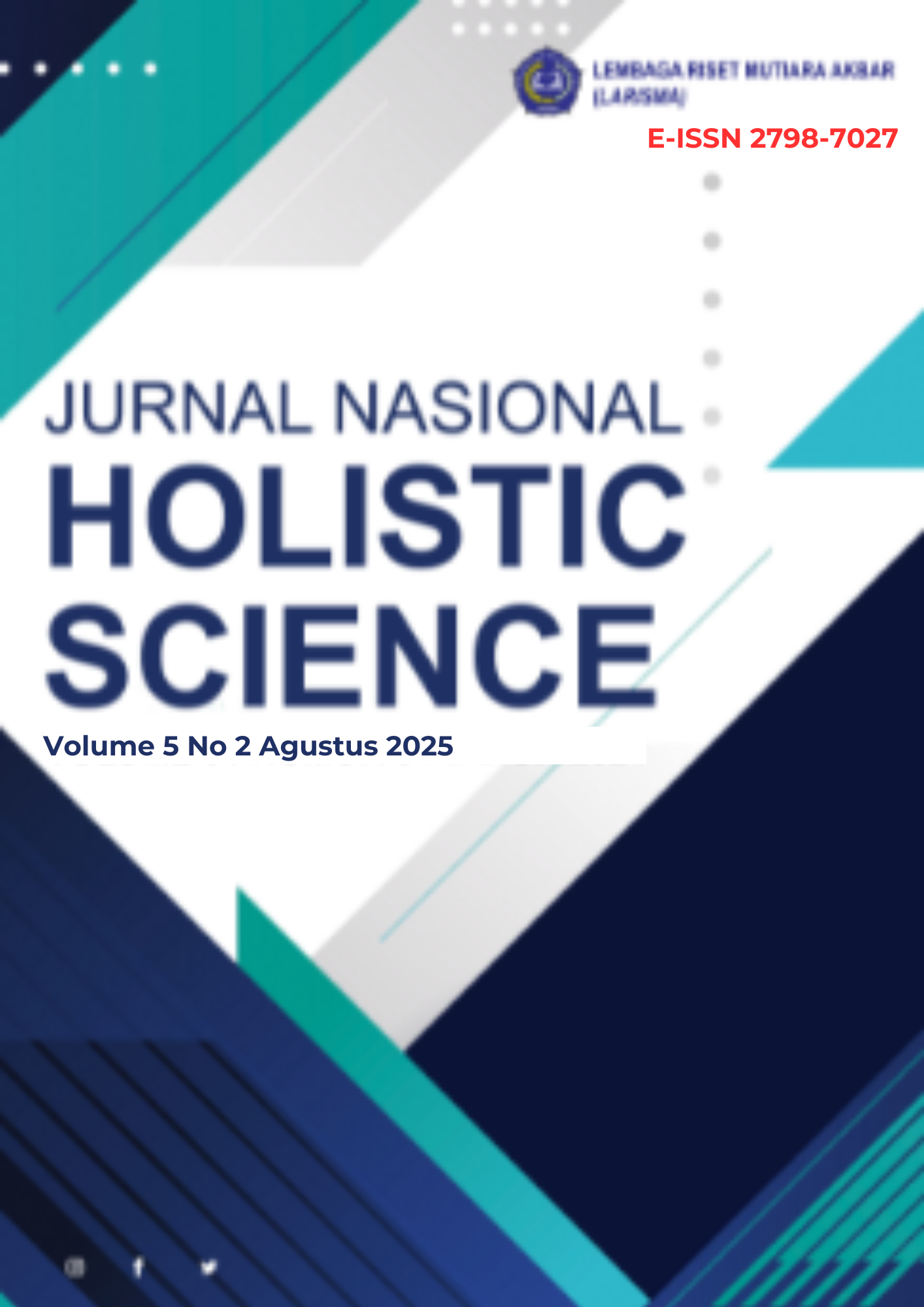Business Strategy Innovation Based on Business Model Canvas (BMC) Case Study of Underpriced Skincare Store
Main Article Content
Abstract
This study aims to design innovative business strategies using the Business Model Canvas (BMC) approach for an underpriced skincare store in Medan. A descriptive qualitative approach was used to identify the store's strengths, weaknesses, opportunities, and threats through a SWOT analysis integrated into the nine BMC elements. Research data was obtained through in-depth interviews with the owner, employees, suppliers, and customers. The results show that the store has advantages in competitive prices, responsive service through the role of beauty advisors, and the presence of multiple digital sales channels. However, limitations were found in the absence of a Customer Relationship Management (CRM) system and dependence on a single e-commerce platform, which are strategic concerns for future business development. Recommended strategic innovations include developing a customer loyalty system, utilizing the TikTok Shop platform, and diversifying market segments. The implementation of BMC accompanied by a SWOT analysis has been proven to produce relevant, adaptive, and sustainable strategic alternatives to improve business performance.
Article Details

This work is licensed under a Creative Commons Attribution-ShareAlike 4.0 International License.
References
Alami, F. N. (2024). Analisis perilaku konsumen untuk implementasi marketing mix pada produk high dan low involvement. COSMOS: Jurnal Ilmu Pendidikan, Ekonomi dan Teknologi, 1(2), 15-30. https://doi.org/10.37567/cosmos.v1i2.140
Dyer, J. H., & Singh, H. (1998). The relational view: Cooperative strategy and sources of interorganizational competitive advantage. Academy of Management Review, 23(4), 660–679. https://doi.org/10.5465/amr.1998.1255632
Ellahi, A., Ain, Q. U., Rehman, H. M., Hossain, M. B., Illés, C. B., & Tanweer, A. (2024). The impact of omnichannel integration towards customer interest in alternatives: Retailer uncertainty and web rooming in retailing. Cogent Business and Management, 11(1). https://doi.org/10.1080/23311975.2024.2316931
Grönroos, C. (1990). Service management and marketing (Vol. 27). Lexington Books.
Gunawan, A., Sumarwan, U., Yuliati, L. N., & Jahroh, S. (2022). Cross-channel behavior in Indonesia: Are omnichannel shoppers more loyal than multichannel shoppers? Binus Business Review, 13(3), 285–292. https://doi.org/10.21512/bbr.v13i3.8526
Halimah, E., & Musadad, A. (2025). Pengaruh diskon terhadap keputusan pembelian pada produk Camille Beauty. Jurnal Ilmiah Ekonomi dan Bisnis, 25(1), 88–93.
Hou, C., & Chen, Y.-X. (2019). A study of the impact of membership system on customer loyalty. Advances in Economics, Business and Management Research, 87(Icmesd), 46–53. https://doi.org/10.2991/icmesd-19.2019.7
Humayra, N. J., Nuraeni, D., Rukmawati, M., & Djuanda, G. (2025). Implementasi manajemen risiko supply chain UMKM hijab menggunakan metode house of risk (HOR) di usaha mikro kecil dan menengah (UMKM).
Kaplan, R. S. (2004). Strategy maps: Converting intangible assets into tangible outcomes. Harvard Business School Press.
Kholifah, & Trifiyanto, K. (2024). The effect of TikTok live streaming shopping on online consumer trust. Jurnal Ilmiah Manajemen Kesatuan, 12(5), 1813–1820. https://doi.org/10.37641/jimkes.v12i5.2532
Laurencia, E. (2020). Pengaruh brand image dan brand trust terhadap loyalitas pelanggan sepatu Nike pada mahasiswa Kwik Kian Gie School of Business. [Skripsi, Kwik Kian Gie School of Business].
Magretta, J. (2002). Why business models matter. Harvard Business Review, 80(5), 86–92.
Nasution, J., Nasution, Z., & Zufrie. (2025). Pengaruh brand ambassador terkenal dan persepsi konsumen terhadap tingkat penjualan skincare Scarlett dengan variabel moderating kepercayaan konsumen di Kota Rantauprapat. Jurnal Ilmiah Ekonomi dan Manajemen, 8(1), 1251–1262.
Ompusunggu, D. P., & Triani, Y. (2023). Transformasi teknologi e-commerce sebagai upaya meningkatkan daya saing UMKM di Kota Palangka Raya: Faktor pendorong dan penghambat adopsi. Jurnal Bintang Manajemen, 1(2), 114–122.
Osterwalder, A., & Pigneur, Y. (2010). Business model generation: A handbook for visionaries, game changers, and challengers. John Wiley & Sons.
Puspaningrum, A. (2020). Social media marketing and brand loyalty: The role of brand trust. Journal of Asian Finance, Economics and Business, 7(12), 951–958. https://doi.org/10.13106/JAFEB.2020.VOL7.NO12.951
Qamila, D. P., Putra, B. A., & Luhung, I. (2024). Analisis strategi ekspansi internasional Eiger. Jurnal Ilmiah Multidisiplin, 3(3), 118–124.
Ramadhani, N., Sugesti, A. I., Sagita, D. N., & Purwanto, E. (2025). Pemanfaatan marketplace digital dalam meningkatkan kinerja UMKM melalui sarana komunikasi di era digital. Jurnal Bisnis dan Teknologi, 2(2), 1–20.
Rangkuti, F. (2015). Analisis SWOT: Teknik membedah kasus bisnis. Gramedia Pustaka Utama.
Safitri, B. I., Kusstianti, N., Lutfiati, D., & Megasari, D. S. (2021). Peranan beauty advisor sebagai daya tarik konsumen dalam pembelian produk kosmetik. E-Journal Manajemen, 10(3), 154–159.
Saputri, S. A., Berliana, I., & Nasrida, M. F. (2023). Peran marketplace dalam meningkatkan daya saing UMKM di Indonesia. Knowledge: Jurnal Inovasi Hasil Penelitian dan Pengembangan, 3(1), 69–75. https://doi.org/10.51878/knowledge.v3i1.2199
Shantilawati, I., Zebua, S., & Tarmizi, R. (2024). Penggunaan digital marketing dalam meningkatkan penjualan bisnis retail. Jurnal Manajemen dan Riset Indonesia (JMARI), 5(1), 30–37. https://doi.org/10.33050/jmari.v5i1.3130
Shaw, S. J., & Davis, K. R. (1973). Marketing management. Journal of Marketing, 37(1), 25–30. https://doi.org/10.2307/1250781
Solomon, M. R. (2020). Consumer behavior: Buying, having, and being. Pearson.
Sugiyono. (2013). Metode penelitian kuantitatif, kualitatif, dan R&D. Alfabeta.
Suhari, Y., Utomo, A. P., Nugroho, I., & Pradana, R. A. (2023). Implementasi customer relationship management (CRM) pada toko herbal (studi kasus: Stokis Herbal HNI Cabang Semarang). INTECOMS: Journal of Information Technology and Computer Science, 6(2), 1163–1169. https://doi.org/10.31539/intecoms.v6i2.7085
Sukarno, B. R., & Ahsan, M. (2021). Implementasi strategi pengembangan bisnis dengan business model canvas. Jurnal Manajemen dan Inovasi (MANOVA), 4(2), 51–61. https://doi.org/10.15642/manova.v4i2.456
Teece, D. J. (2010). Business models, business strategy and innovation. Long Range Planning, 43(2–3), 172–194.
Umar, F., Raharja, E., Mahardika, J. A., Topan, M., & Arkhiansyah, B. (2023). Social media marketing and brand loyalty, the mediating role of brand trust: A partial least square algorithm (PLS) approach. Scientific Journal of Informatics, 10(3), 323. https://doi.org/10.15294/sji.v10i3.45486
Wardana, M. H., & Sitania, F. D. (2023). Strategi pengembangan bisnis melalui pendekatan business model canvas pada Kedai Kabur Bontang. Jurnal Teknik Industri (JATRI), 1(1), 10–17.

